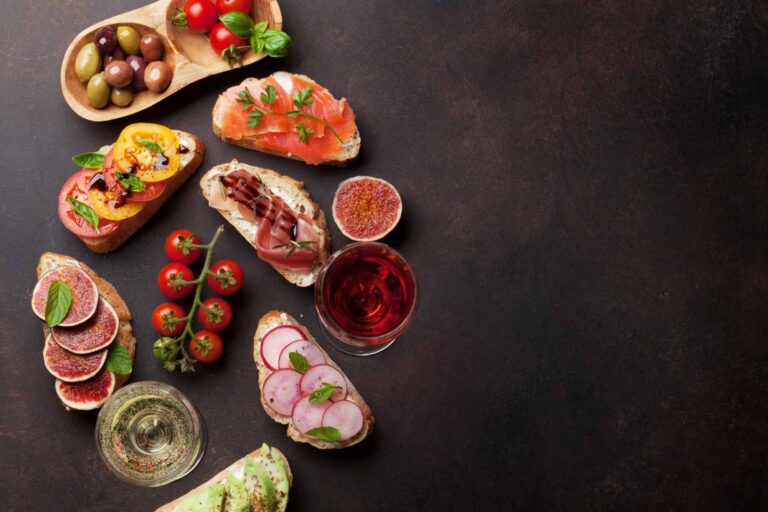

Madrid does not reveal itself all at once. It begins with the warmth of late afternoon light on stone façades, the murmur of voices spilling from shaded plazas, and the faint scent of garlic drifting from the doorway of a busy bar. The city is layered with history, yet it is always ready for the next conversation. And this is invariably about food. For the art of enjoying tapas is a well-loved Spanish ritual both simple and profound.
I have visited Madrid many times, and for many different reasons. But on one particular trip, I made it my mission to find the best tapas bars in Madrid. Tapas are, after all, among Spain’s most famous culinary traditions alongside paella and callos.
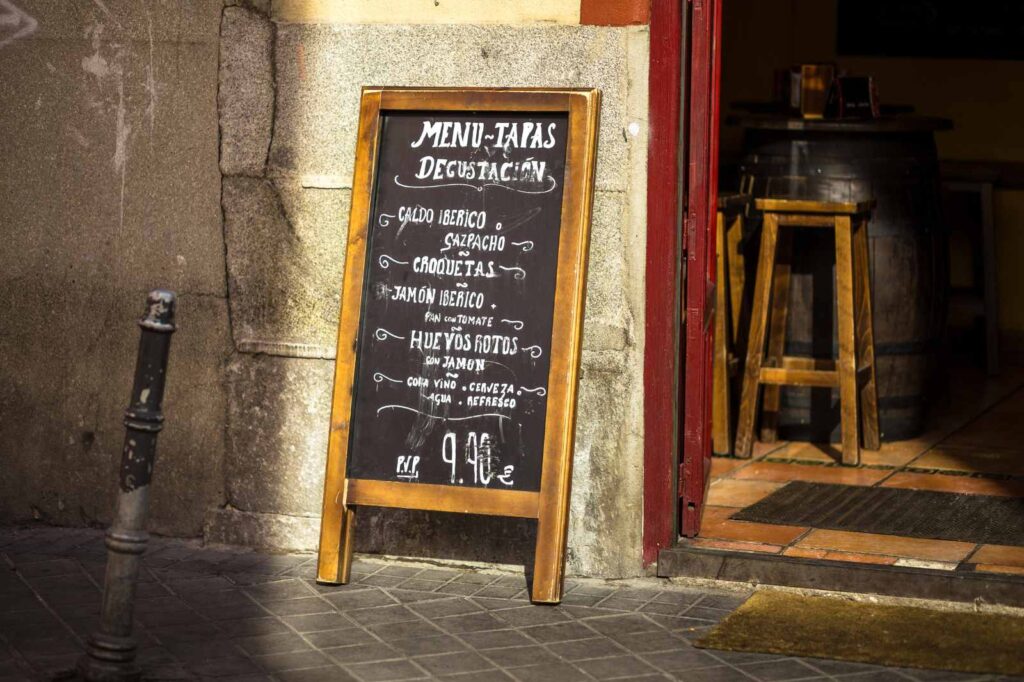
That weekend, I turned to Enrique González Mendizábal, a private guide who runs his own company, MadSnail Travel. He promised to reveal some of the city’s best-kept secrets, the kind of places that rarely appear in guidebooks.
We began at one o’clock on a luminous Saturday afternoon, meeting at my hotel, the Westin Palace Madrid. To prepare for an afternoon of feasting, before that I had already taken a leisurely stroll through Puerta del Sol and Plaza Mayor, determined to clock in a few extra steps before surrendering to food, wine, and discovery.
Your Private Hacienda in Spain

Looking for a destination beyond Madrid? Escape to La Esperanza Granada, a private hacienda for 14 guests surrounded by gardens and mountain views. Available exclusively for buyouts, weddings, and retreats — a true luxury villa experience in Andalusia.
👉 Explore La Esperanza Granada — Spain’s most beautiful private hacienda
A FOODIE GUIDE IN MADRID
Some guides open doors. Enrique, our Madrid foodie guide, an entire world unknown to tourists. He is the enthusiastic companion who can move with equal ease between a rustic tavern and a centuries-old archive. A true lover of good food with the aura of an artist who is paid too little, Michelin stars mean nothing to him. Instead, he is fixated on places where locals gather, glasses in hand, to argue politics or poetry over plates of croquetas.

He is also a passionate intellectual with an astonishing memory for history. Dates, names, and anecdotes surfaced in his stories as naturally as wine was poured into glasses. One moment he is describing the way vermouth became Madrid’s afternoon drink; the next, he is recounting tales of Bourbon kings or the writers of the Spanish Golden Age.
With Enrique, an ordinary afternoon in Madrid is a living tapestry of flavors, stories, and unexpected magic. He didn’t just guide us to the best tapas bars in Madrid—he made us feel the city itself was guiding us through him.
THE BEST TAPAS BARS IN MADRID
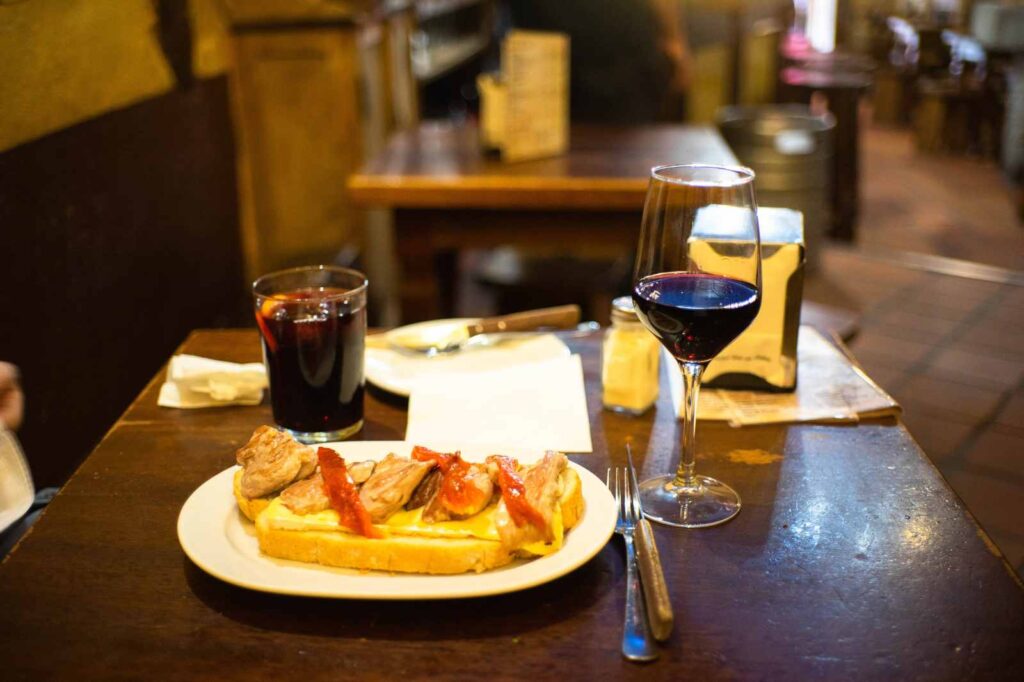
The moment we met, I blurted out what I had been thinking all morning: “Tapas. As soon as possible.” I was on a mission to uncover the best tapas bars in Madrid, after all. Enrique only smiled, as if he had been waiting for me to say the words.
“Did you know tapas are meant to be free?” he asked, his eyes gleaming. He leaned closer, lowering his voice as though sharing a secret. “They began as small bites chefs offered before the meal. So when I see a place calling itself a tapas bar but charging for every plate—well, it makes me uneasy.”
READ ABOUT GETTING MARRIED IN SPAIN
Of course I did not know this. I’d been diligently paying for my tapas at every restaurant so far, after all. Enrique read my mind. He said: “But, of course, you have to know where to go, to get the free tapas.”
In that instant, his words reframed the city. Tapas weren’t just food anymore. They were Madrid’s way of saying welcome—an invitation to taste, to linger, to belong.
A TAPAS BAR CRAWL THROUGH MADRID
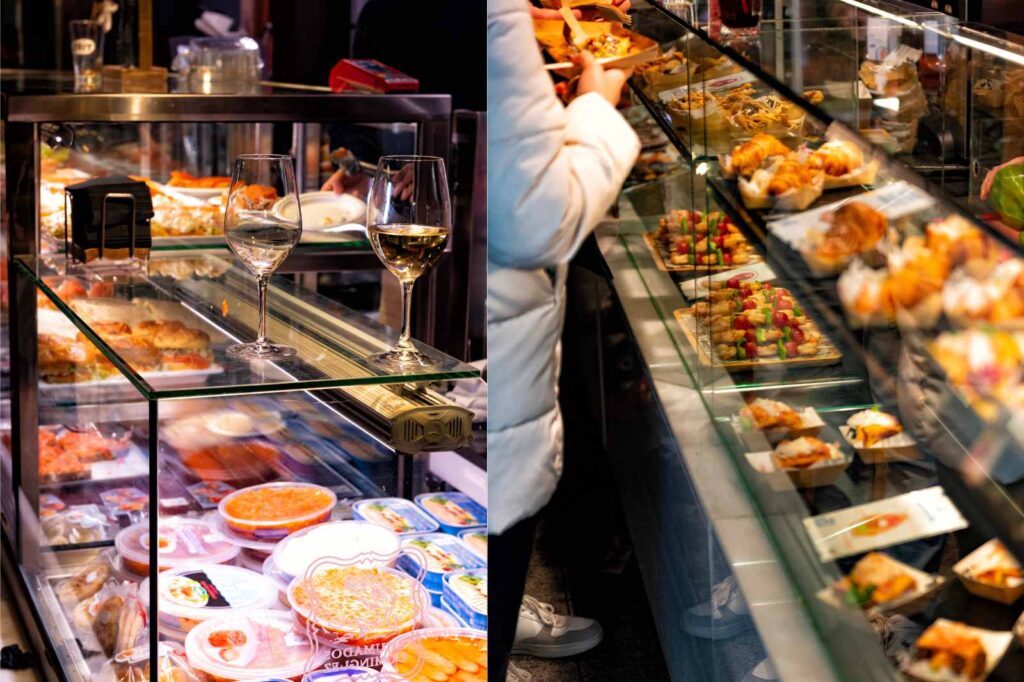
“Don’t think of this as a tapas tour,” Enrique said. “This is an afternoon tavern crawl through Madrid.”
So we wandered the narrow streets of Las Letras, slipping into bars where bottles lined the walls and the air carried the warm scent of garlic and wine.
At one bustling stop, we squeezed into a sliver of space at the counter—barely enough for three glasses of red, a plate of jamón, a bowl of morcilla, and chorizo so rich it lingered on my tongue long after the last bite.
The counter was worn smooth from years of elbows, the bartenders moved with practiced choreography, and conversations spilled around us in quick bursts of laughter and debate. By then, the world glowed in that Madrid way—bright, noisy, alive—and our crawl had only just begun.
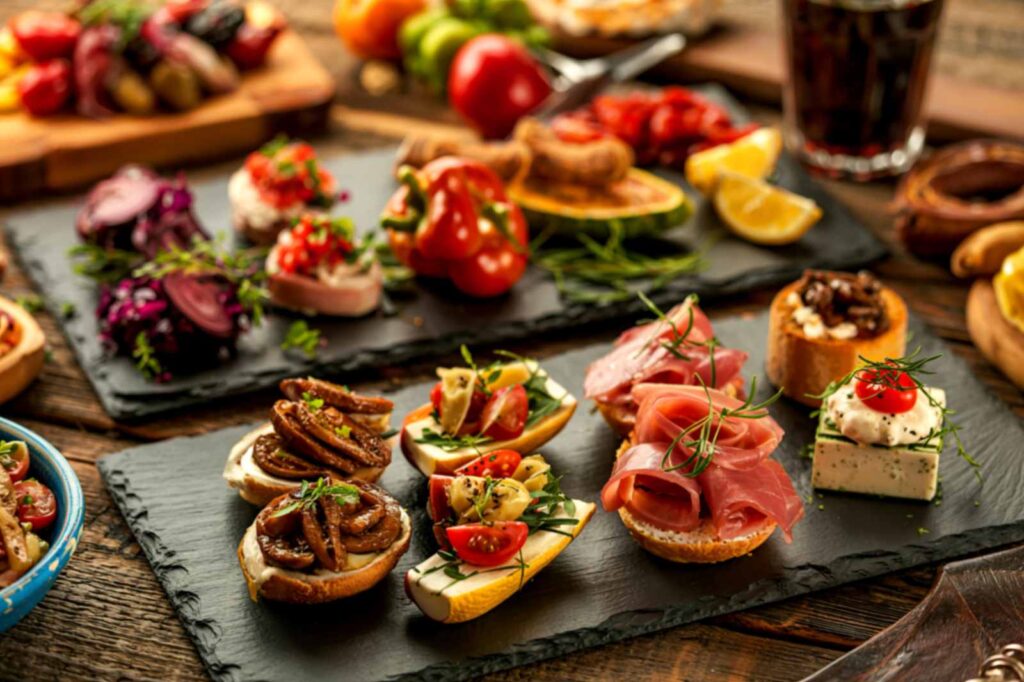
AWAY FROM THE TOURIST TRACK
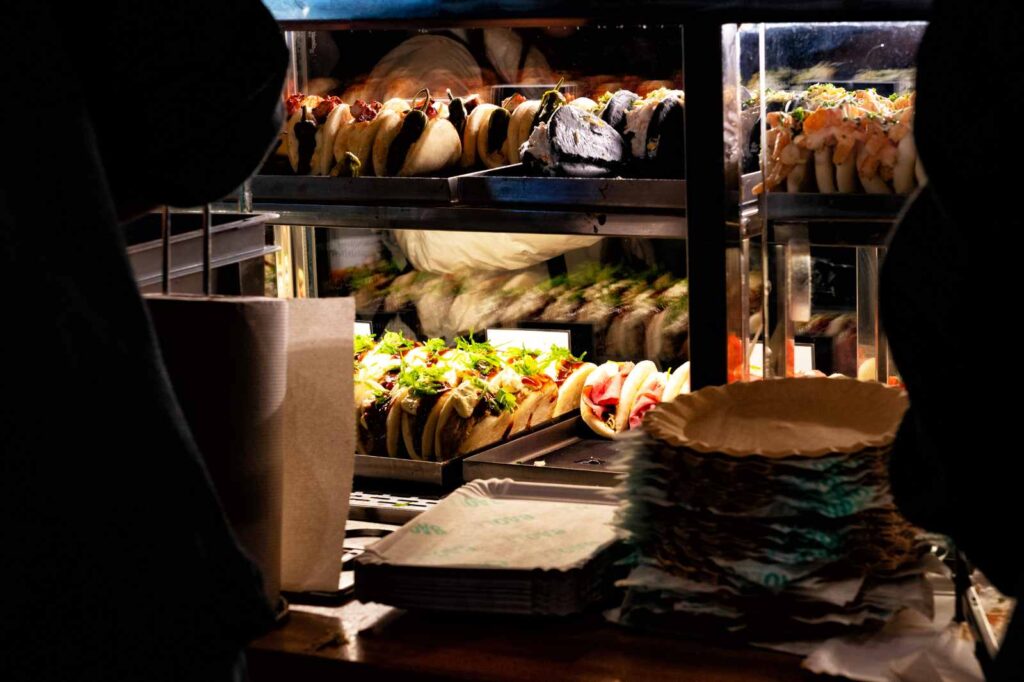
At last, Enrique steered us toward quieter streets near the Royal Palace. Here, the tourist chatter faded, replaced by the softer rhythm of locals heading home for the evening. The city seemed to exhale, as though saving its secrets for those who knew where to look.
“Where are we going next?” I asked, my voice full of anticipation.
He stopped in front of a nondescript doorway and smiled, lowering his voice to a conspiratorial whisper. “This is where the real magic happens,” he said. “Tonight, you will see how lobster with rice should truly be done—Madrid style.”
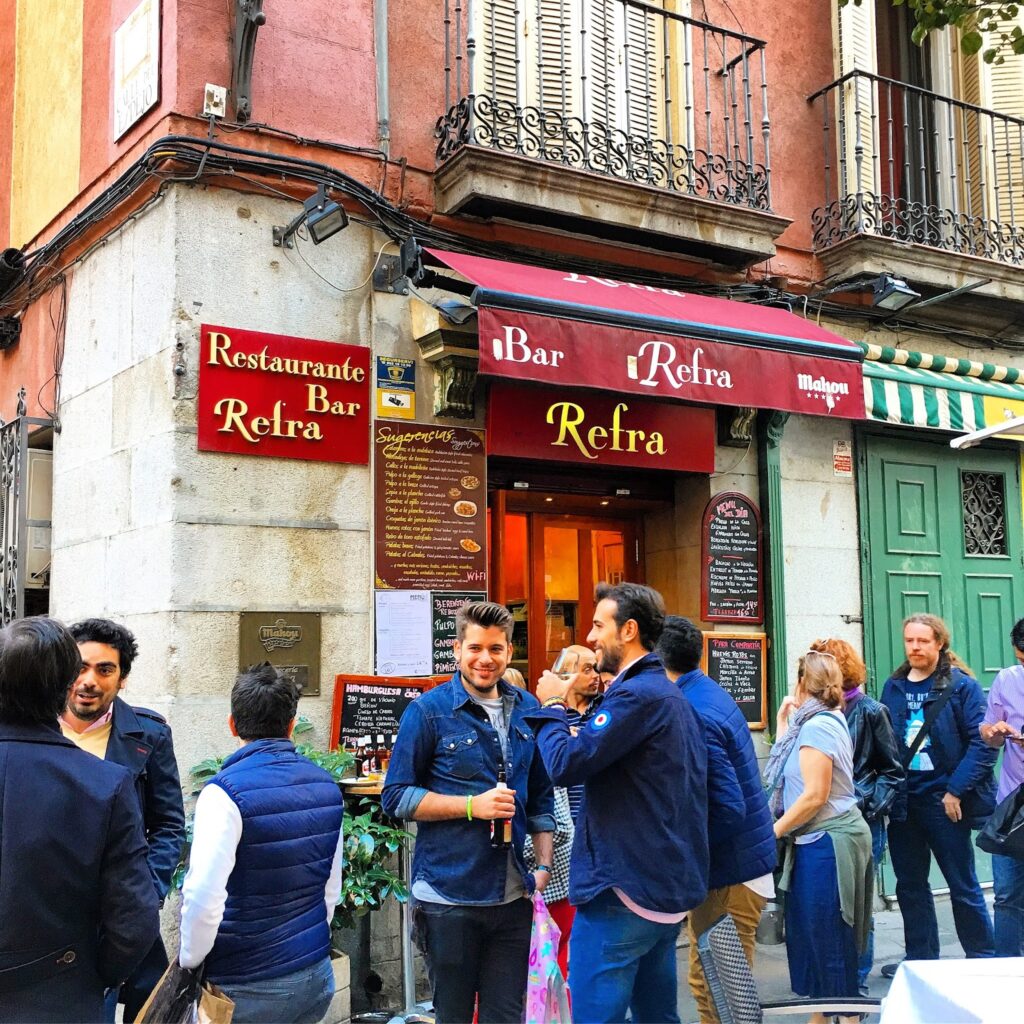
EL MENU DE ALONA
The restaurant El Menú de Alona, tucked away on a modest street near the Royal Palace, was run by a former mechanic and his Ukrainian wife. From the outside, nothing suggested what awaited inside. Yet the moment we opened the door, the scent of lobster rice rushed toward us—rich, briny, irresistible. Locals crowded every table, their conversations rising with the steam from wide, shallow pans.
Enrique leaned closer, lowering his voice as though sharing a treasured secret. “She cooks rice better than most Madrileños,” he swore.
In that moment, I believed him. How could we not sit down? How could we resist tasting the dish that had drawn so many locals here on a Saturday evening, far from the tourist paths? It felt like another step in our search for the best tapas bars in Madrid, a detour that revealed the city’s truest flavors.
IS TINTO DE VERANO BETTER THAN SANGRIA?
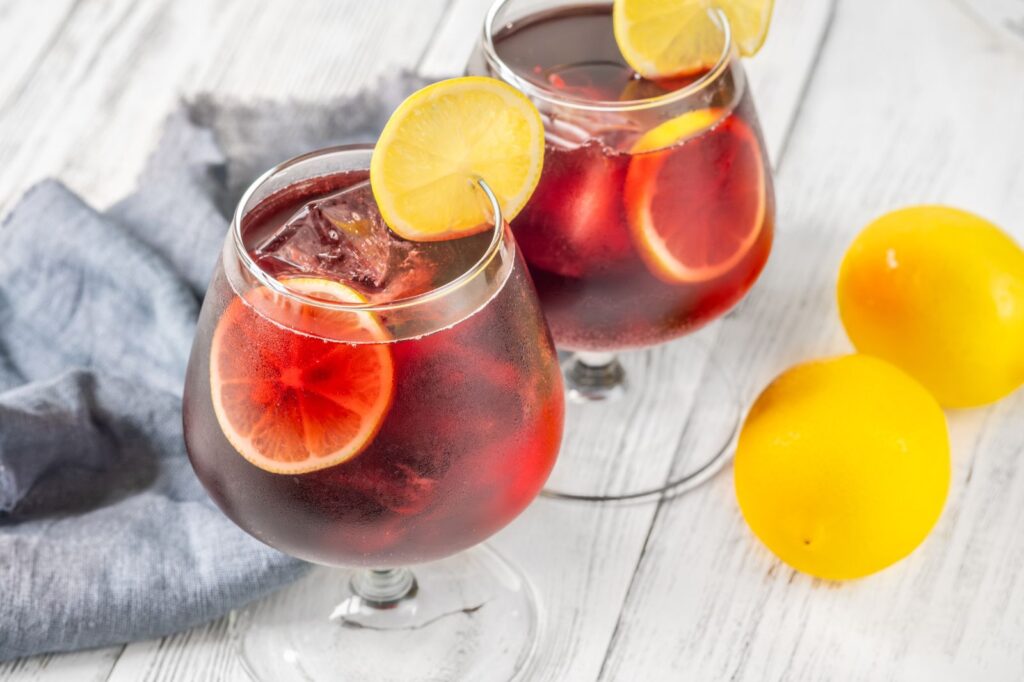
“SANGRIA IS FOR TOURISTS”
We let Enrique take charge of the ordering. Within minutes, a frosted pitcher of Tinto de Verano gleamed on the table, its ruby color glowing against the white cloth. Slices of lemon drifted across the surface, catching the light each time we raised our glasses.
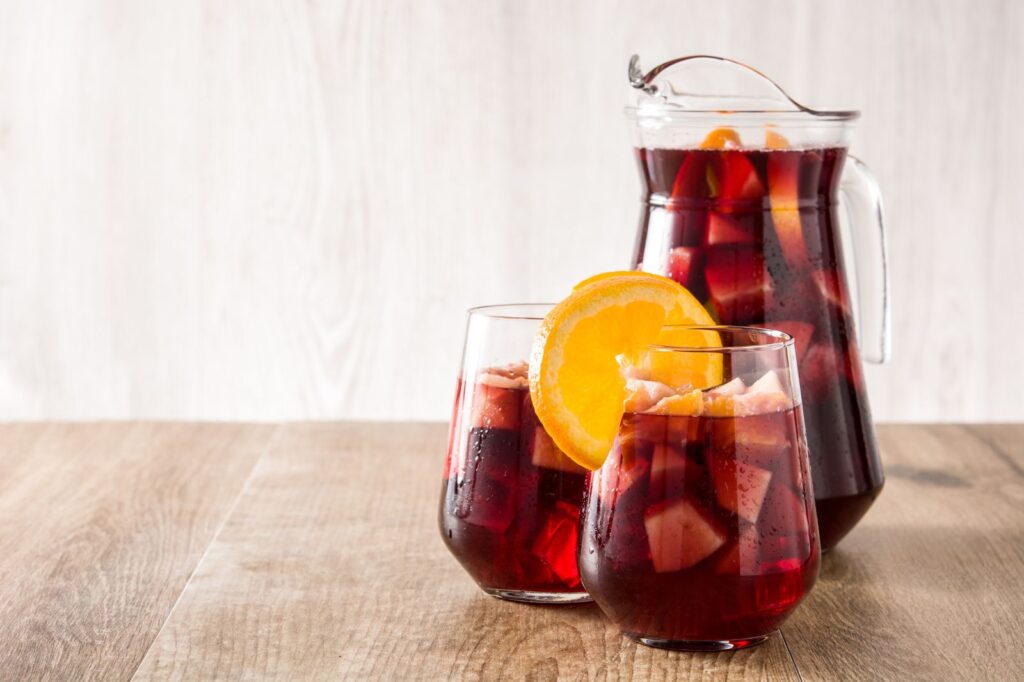
Enrique broke the pause with one of his lessons on Madrid cooking and Spanish food traditions. “Sangria is for tourists,” he said with a twinkle in his eye. “We locals drink Tinto de Verano.” He raised his glass to seal the point.
I sipped and understood at once. The drink tasted cool, crisp, and quietly refreshing—none of the sticky sweetness that defines sangria abroad. It felt lighter, more playful, and utterly Madrid. In that instant, our search for the best tapas bars in Madrid widened into something deeper: a glimpse into the city’s true flavors and everyday culture.
THE REAL LOBSTER RICE IN MADRID
Then the star of the evening arrived: a vast cauldron of soupy rice with lobster, still bubbling as the waiter set it down. Steam curled upward in fragrant clouds, rich with the scent of the sea and shrimp shells. The dish silenced us for a moment, as if everyone had fallen under the same spell.
The waiter ladled soupy rice into our bowls, and Enrique leaned forward with the air of a professor about to deliver a lesson.
“This isn’t paella,” he said firmly. “It’s a rice dish with lobster. A true paella is dry, and each grain must remain separate. What we have here is something else—a wetter dish, cooked in the rich juice of shrimp heads.”
The distinction mattered to him, and soon it mattered to us as well. The steaming bowls in front of us held not a tourist version of Spanish food, but an honest plate from Madrid’s kitchens: briny, intense, and meant to be shared.

NAGATACHO OHKA: JAPAN’S MOST EXCLUSIVE DINING EXPERIENCE

The meal crowned an afternoon of discovery. We had set out to find the best tapas bars in Madrid, and instead we uncovered the line between myth and tradition, between what travelers imagine and what locals actually eat.
What a wonderful afternoon in Madrid, eating our way through a #Travelife—one tapa, one glass of wine, one unforgettable story at a time.
Tapas 101 in Madrid
Tapas are more than food in Madrid—they are a way of life. Traditionally, tapas began as small complimentary dishes served with drinks. A slice of tortilla, a piece of cheese, or a few olives would appear at your table without asking, a gesture of hospitality from the tavern.
Today, the tradition lives on. In neighborhoods like La Latina and Lavapiés, you still find taverns where every glass of Rioja or vermouth comes with a little bite. In trendier districts such as Chueca and Malasaña, chefs reimagine tapas with bold, creative twists.
Whether rustic or modern, tapas in Madrid are about sharing. Plates are small, conversations are lively, and the experience connects food with friendship. For many travelers, learning this rhythm is the first step in discovering the best tapas bars in Madrid.
Quick Tips for Tapas in Madrid
– Timing matters. Tapas bars are busiest in the evenings, especially after 8 p.m. For a more local feel, go later at night.
– Order drinks first. In many traditional taverns, your drink comes with a complimentary tapa. Rioja wine, vermouth, or cañas (small beers) are classic choices.
– Share everything. Tapas are meant to be enjoyed together. Order several plates for the table and taste a little of each.
– Look for the locals. The best tapas bars in Madrid are often packed with Madrileños. If you see locals standing at the bar, you’re in the right place.
– Try something new. From croquetas and tortilla to callos or morcilla, tapas are the perfect way to sample Spanish flavors without committing to a full dish.
READ ABOUT SKIING IN SPAIN
Editor’s Note: Unfortunately, El Menu de Alona closed this September 2025. We were fortunate to have tasted her cooking,


